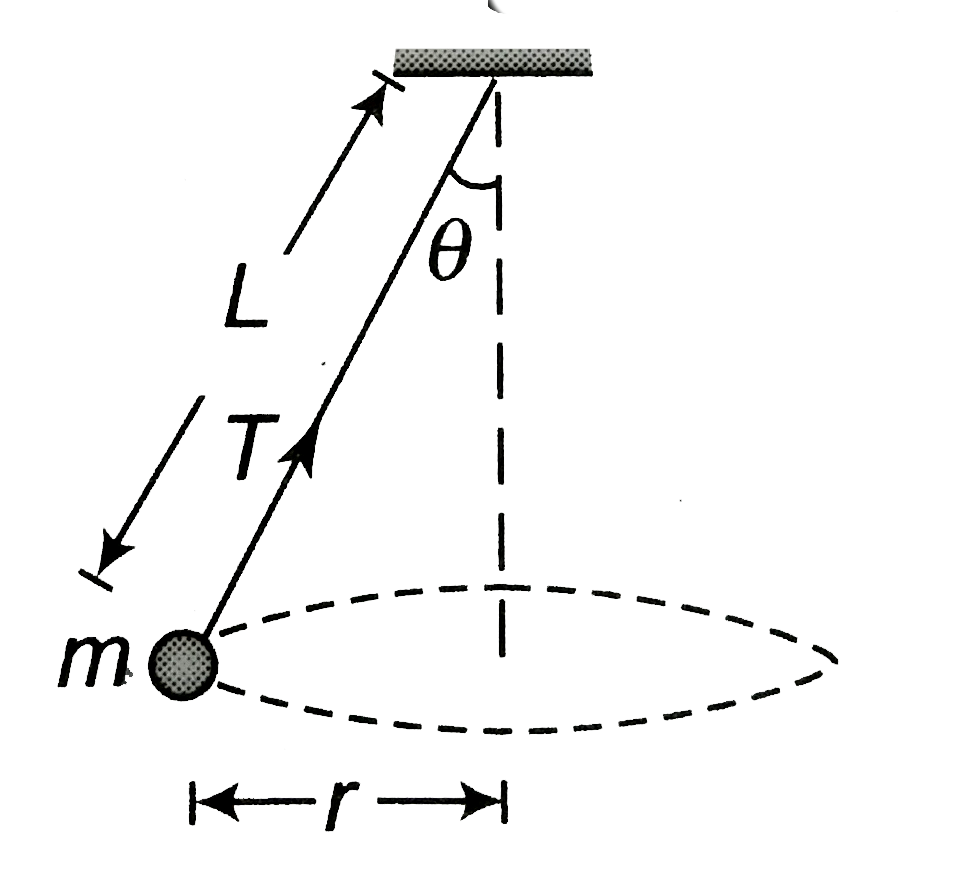A body of mass m is tied with rope and rotated along horizontal circle of radius r. If T is the tension in the rope and v is the velocity of body and an instant the force required for circular motion is
T+mv2r
T−mv2r
mv2r
mv24r
The correct Answer is:C
To solve the problem, we need to determine the force required for a body of mass m to move in a circular path of radius r at a velocity v. This force is known as the centripetal force.
1. Understanding Circular Motion:
- When an object moves in a circular path, it requires a force directed towards the center of the circle to maintain that circular motion. This force is called the centripetal force.
2. Centripetal Force Formula:
- The formula for centripetal force Fc is given by:
Fc=mv2r
where:
- m is the mass of the body,
- v is the velocity of the body,
- r is the radius of the circular path.
3. Identifying the Role of Tension:
- In this scenario, the tension T in the rope provides the necessary centripetal force to keep the body moving in a circular path. Therefore, we can equate the tension to the centripetal force:
T=mv2r
4. Conclusion:
- Thus, the force required for circular motion, which is the centripetal force, is equal to the tension in the rope:
T=mv2r
Final Answer:
The force required for circular motion is mv2r.
---
- When an object moves in a circular path, it requires a force directed towards the center of the circle to maintain that circular motion. This force is called the centripetal force.
- The formula for centripetal force Fc is given by:
Fc=mv2r
where:
- m is the mass of the body,
- v is the velocity of the body,
- r is the radius of the circular path.
- In this scenario, the tension T in the rope provides the necessary centripetal force to keep the body moving in a circular path. Therefore, we can equate the tension to the centripetal force:
T=mv2r
- Thus, the force required for circular motion, which is the centripetal force, is equal to the tension in the rope:
T=mv2r
The force required for circular motion is mv2r.
Topper's Solved these Questions
Similar Questions
Knowledge Check
A body of mass m tied to a string is moved in a vertical circle of radius r. The difference in tensions at the lowest point and the highest point is
A2mgB6mgC4mgD8mgThe force required to keep a body in uniform circular motion is
ACentripetal forceBCentrifugal forceCResistanceDNone of the aboveA body of mass 1 kg is rotated in a horizontal circle of radius 1 m and moves with velocity 2ms−1 The work done in 10 revolutions is
A40 JB20 JC4×2π(10)JDzero
A particle of mass m is tied to light string and rotated with a speed v along a circular path of radius r. If T=tension in the string and mg= gravitational force on the particle then actual forces acting on the particle are
View SolutionA body of mass 'm' is rotated by means of a string along a verticle of radius 'r' with constant speed .The difference in tension when the body is at the bottom and at the top of the verticle circle is
View SolutionA body of mass 2 kg is tied to the end od a string 2 m long and revolved in horizontal circle .If the breaking tension of the string is 400 N, then the maximum velocity of the body will be
View SolutionA paricle of mass m is tied to a light string of length L and moving in a horizontal circle of radius r with speed v as shown. The forces acting on the particle are

View SolutionA stone tied to one end of rope and rotated in a circular motion . If the string suddenly breaks then the stone travels.
View Solution
